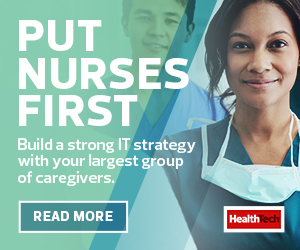Key Use Cases and Benefits of Federated Learning Systems
To unlock the value of their data and support their organizations by activating additional revenue streams and contributing to potentially life-changing, data-driven innovation, today’s healthcare CIOs have a timely opportunity to incorporate federated learning.
Federated learning — a machine learning framework that allows artificial intelligence algorithms to learn from data distributed across multiple locations and owners — makes it possible to collaborate with other healthcare organizations to develop more impactful data-driven insights without needing to share sensitive data directly.
For instance, to contribute to healthcare innovation while also increasing revenue streams, CIOs can use federated learning to license their organizations’ clinical data to relevant researchers. If a healthcare organization wishes to optimize the use of a particular ward or department (such as their intensive care unit), the technology can be used as operational machine learning when applied to clinical data. From a transactional perspective, federated learning can also be used by physicians when interfacing with electronic health record systems.
No matter the use case, federated learning systems offer numerous benefits to CIOs, their healthcare organizations and the data they possess, including:
- Privacy and compliance: Federated learning complies with privacy guarantees based on consent requirements and regulations, such as HIPAA and the European Union’s General Data Protection Regulation, by keeping all data housed in healthcare organizations’ networks at all times. With previous attempts to protect healthcare data via de-identification falling short (in some cases, de-identification being capable of circumventing HIPAA), alternative approaches to data security need to be considered. In fact, federated learning can help solve the notorious de-identification dilemma of data that hasn’t been de-identified enough being used to reidentify patients and data that has been too de-identified being useless for AI algorithm training.
- Security and accessibility: By keeping all data housed only in healthcare organizations’ networks, federated learning makes highly risky and slow physical data transfers a thing of the past. Gone, too, is the need to trust data users to properly return or dispose of data once they’re finished working with it. With federated learning systems, those who are authorized to access data can do so securely and efficiently, no matter their location.
- Organization and integration: Between X-ray and MRI imagery, blood pressure readings and physicians’ handwritten notes, there is an endless variety of healthcare data to contend with. Federated learning can help by seamlessly integrating with existing healthcare databases or EHRs, and structuring all data so it’s easily searchable and actionable.
- De-risked correlation: The ability to correlate different data sets is key for clinical research, as local data sets are often too small or biased. However, this brings the problematic possibility of correlating data sets becoming linked and ultimately de-anonymized. While there will likely always be a trade-off between data privacy and utility, federated learning can help promote more secure data correlation by offering differential privacy, which allows for data sharing by describing the patterns of groups within data sets while withholding information about specific individuals.
READ MORE: Learn why healthcare should redouble their data protection efforts.
Unlock the Value of Existing Data with Federated Learning
During these turbulent times — when resources are stretched thin yet healthcare requires continued advancement — leveraging data efficiently and affordably is paramount.
Rather than focusing solely on acquiring more data — or worse, allowing data to remain virtually inaccessible — CIOs should work to unlock the value of their existing data via federated learning. In particular, seek out federated learning architectures capable of ensuring security not only for the data in question but also for the code being used to write the AI algorithms, as this may hold proprietary IP and sensitive business strategy information data users need to protect.
By implementing this type of federated learning system, CIOs stand to successfully fulfill their undeniably challenging mandate to diversify revenue streams and foster collaborative, data-driven innovation on behalf of their organizations.











